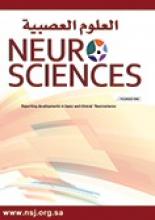Abstract
OBJECTIVE: The study was planned to investigate the possible effects of peroperative prone and supine positions on postspinal headache incidence.
METHODS: This prospective study was completed at Demet Hospital, Ankara, Turkey between January-July 2003. Two groups of patients were studied, Group 1 comprised randomly selected male American Society of Anesthesiology Classification grade 1 (ASA 1) patients with an age range of 20-40, who were scheduled for pilonidal sinus operation. Group 2 comprised randomly selected male ASA1 patients with an age range of 20-40 who were planned for knee arthroscopy. After both groups were given spinal anesthesia in the sitting position with a 22-gauge Quincke needle, the patients who were scheduled for pilonidal sinus operation were laid in the prone position, while the patients planned for arthroscopy were laid in the supine position. The patients were then asked about postoperative headache complaints on the postoperative 3rd and 7th days. All patients were observed postoperatively for 2 days for analgesia. Both groups used only paracetamol 500mg orally for postoperative analgesia and oral fluid intake was permitted 3 hours after operation.
RESULTS: The postoperative headache incidence of Group 2 (patients operated in supine) position was statistically higher than that of Group 1 (patients operated in prone). The higher incidence of post spinal headache in the supine position was attributed to increased cerebrospinal fluid loss due to gravity and increased intra abdominal pressure associated with this position.
CONCLUSION: Spinal anesthesia can be a safe method for operation in the anal area in the prone position, and the prone position may prove superior to the supine position with respect to post-dural puncture headache development after spinal anesthesia practices.
- Copyright: © Neurosciences
Neurosciences is an Open Access journal and articles published are distributed under the terms of the Creative Commons Attribution-NonCommercial License (CC BY-NC). Readers may copy, distribute, and display the work for non-commercial purposes with the proper citation of the original work.






